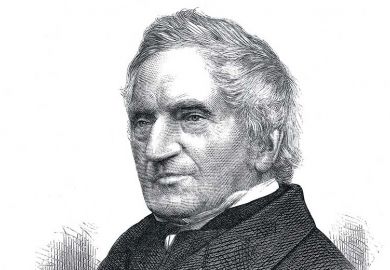Jon Lawrence sets out to rebut the increasingly popular refrain, summed up by his book’s title, that the sense of community that once characterised much of English society has died out and that we now live as individuals and consumers. Community hasn’t died, he argues, but it has changed, and in many ways for the better. Although it always found room for personal choice, it now makes more space for it, showing that “individualism and community may be polar opposites in social theory, but not in lives as they are actually lived”.
This is an ambitious and wide-ranging book, perhaps too wide in its scope, for there have been and are so many different English societies as to make generalisations dangerous. In practice, Lawrence concentrates on largely working-class communities, but even then the differences between Bethnal Green in east London and the working-class areas of Tyneside or Liverpool are vast. Nevertheless, the central argument of this well-researched and original study is largely convincing.
Much of the book is concerned with debunking the many myths and romantic notions that surround English, and particularly working-class English, society as it existed in the mid-20th century. As the author notes, one problem is nostalgia: from at least the early years of the Industrial Revolution, “cultural critics have been comparing their own fragmented, hedonistic, and selfish times with an earlier age of social harmony and community”. Whereas Coleridge and Ruskin yearned for a past rural society, today’s critics tend to idealise aspects of the very industrial society that their predecessors despised.
Although making considerable use of regional studies, Lawrence recognises a problem: many of them are conducted by people who do not come from the communities studied and, inevitably, bring their own expectations and preferences with them. Their surveys may be based on a vast number of personal views and opinions, but those who draw conclusions from them may well prioritise attitudes and values that conform to their own assumptions. Thus, words and phrases such as “cohesion”, “close-knit” and “mutual support” can come to be seen as positives, while “individualism”, “ambition” and “self-fulfilment” are regarded as their opposites (or even as negatives). Lawrence disputes this interpretation and sums up his purpose as “exploring how people have sought to reconcile the deep-rooted individualism of English popular culture with the urge for social connection through family and community”.
For many of us, the archetypal examples of close-knit communities are probably the mining communities and towns dominated by single industries, where work was the force that pervaded much of social, cultural and domestic life. Social status was determined largely by position in the workplace, with big hewers in mining villages, shipwrights and boilermakers in shipbuilding towns and foundry workers in iron and steel towns forming labour aristocracies. Social life replicated working life, with workers drinking in pubs named after their trade or even in different rooms according to grade, while the timing of holidays was fixed according to the requirements of the industry. Even gender relations were formed by the nature of work: the position of women was very different in cotton towns, where women had worked for generations, from in the north-east, where it was rare for working-class women to work outside the home.
Lawrence’s claim is that, even in places which came closest to this image of collective communities (and they were far from typical, with multi-industry towns being clearly different), this image is, at best, partial: community, collectivism and cooperation always existed side by side with private life, personal ambition, kinship and consumerism. The supportive evidence he brings from a wealth of personal family histories suggests that such communities were, in geographic, social and occupational terms, far more mobile than has usually been suggested. People didn’t necessarily work in one industry for all their lives: miners became seamen, seamen, miners or shipyard workers, and many aspired to become proprietors of corner shops; they moved house, within or between towns, often because of kinship networks; new industries or higher pay attracted waves of immigration, with Scots and Irish emigrating to Tyneside or Liverpool, and the ambitious, as ever, moving to London.
The effects of the decline of the industrial economy from the 1960s, which many have seen as leading to a rootless and more mobile society and a fracturing of social cohesion, have, Lawrence argues, been much exaggerated. Not only had “traditional” communities been far more mobile than this implies, but the accompanying changes of better housing and opportunities for greater prosperity and personal advancement were always aspirations in most communities. There was, rather, a new synthesis, as a section on “Tyneside in the Swinging Sixties” – which explores the interaction of national developments with a local culture – demonstrates admirably.
The communities that had developed by the time of the Second World War had, necessarily, been shaped by industries and their own internal dynamics, but a considerable part of Lawrence’s book is concerned with attempts to plan new towns and estates with positive social goals in mind. He describes the major exodus from Britain’s leading conurbations in the immediate post-war years: over a million Londoners moved to new towns; similar numbers left provincial centres.
The concept of planned new towns and communities has an interesting history, from Ebenezer Howard’s garden cities, via the collectivist ethos of the planners of Stevenage (designated the UK’s first New Town in 1946) to the “town in the country” concept of Milton Keynes (designated in 1967), where much of the housing is hidden in the hollows beyond the boulevards. Such planning has always been influenced by ideological views of what constitutes the good life and what environment best provides for it. Such visions, lauded by some and criticised by others, have usually seen the purity of their conceptions founder on the perversity of the new inhabitants in imposing their own tastes, perhaps the very reason for their success. If nostalgia for their old homes and a more organic and collective past was apparent in the responses of those who moved to the new towns, it was balanced by a delight at the weakening of custom and tradition, which thwarted individual ambition.
This is a refreshingly optimistic and generally convincing study, although questions remain. There has been loss as well as gain and it is still unclear whether the employment and opportunities provided by light industry and new towns or estates can provide as strong a sense of pride in community and common social and cultural values as existed previously. Many former shipbuilding or steel towns, or mining villages, are still defined by what they once were – but would their inhabitants wish to return to the past with its hardships as well as its cohesion?
A. W. Purdue, a visiting reader at the Open University, is co-author with J. M. Golby of The Civilisation of the Crowd (1984 and 1999).
Me, Me, Me?: The Search for Community in Post-war England
By Jon Lawrence
Oxford University Press, 352pp, £25.00
ISBN 9780198779537
Published 27 June 2019
The author
Jon Lawrence, associate professor of history at the University of Exeter, was born and grew up in east Bristol, like his parents. Yet he secured a place at Bristol Grammar School in the leafy west of the city, and so embarked on a trajectory, he says, that put him within “the fag end of [the] post-war, working-class ‘scholarship boy’ phenomenon, though as I explore in Me, Me, Me?, class is never as simple as that”.
While studying history at King’s College, Cambridge in the early 1980s, Lawrence recalls that he “had the good fortune to be taught, from week one, by the historian Gareth Stedman Jones just at the moment when he was rethinking his New Left Marxism and pioneering what came to be known as the ‘linguistic turn’”. He still regards himself as “primarily a social historian who places questions of language and culture centre stage”.
Although books such as Speaking for the People: Party, Language and Popular Politics in England, 1867-1914 (1998) and Electing Our Masters: The Hustings in British Politics from Hogarth to Blair (2009) dealt with more overtly political themes, Lawrence sees all his works as linked by a desire to “understand the cross-cutting, messy politics of everyday life. My earlier work seeks to do this by exploring the interactions between elite and plebeian politics at public meetings, elections and in the early mass party organisations. Me, Me, Me? focuses directly on the everyday because from the 1940s, sources survive that make this possible: archived papers from post-war social-science projects.”
Asked about who benefits from the often strident rhetoric about how selfish and consumerist we all are today, Lawrence responds that “these tropes are so powerful because they allow people to critique the economic and social forces atomising 21st-century society. Exploding the myths is therefore less important than mobilising the yearning they signal for greater social connection in our lives.”
Matthew Reisz
POSTSCRIPT:
Print headline: Striving alone, working together
Register to continue
Why register?
- Registration is free and only takes a moment
- Once registered, you can read 3 articles a month
- Sign up for our newsletter
Subscribe
Or subscribe for unlimited access to:
- Unlimited access to news, views, insights & reviews
- Digital editions
- Digital access to THE’s university and college rankings analysis
Already registered or a current subscriber?







